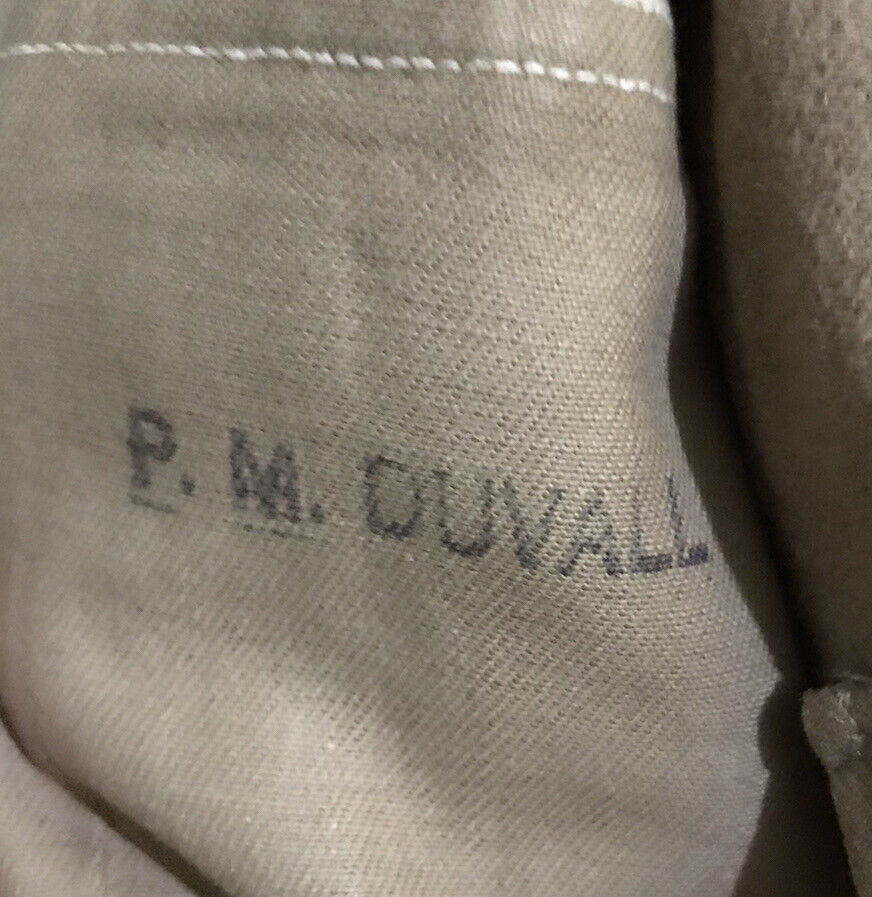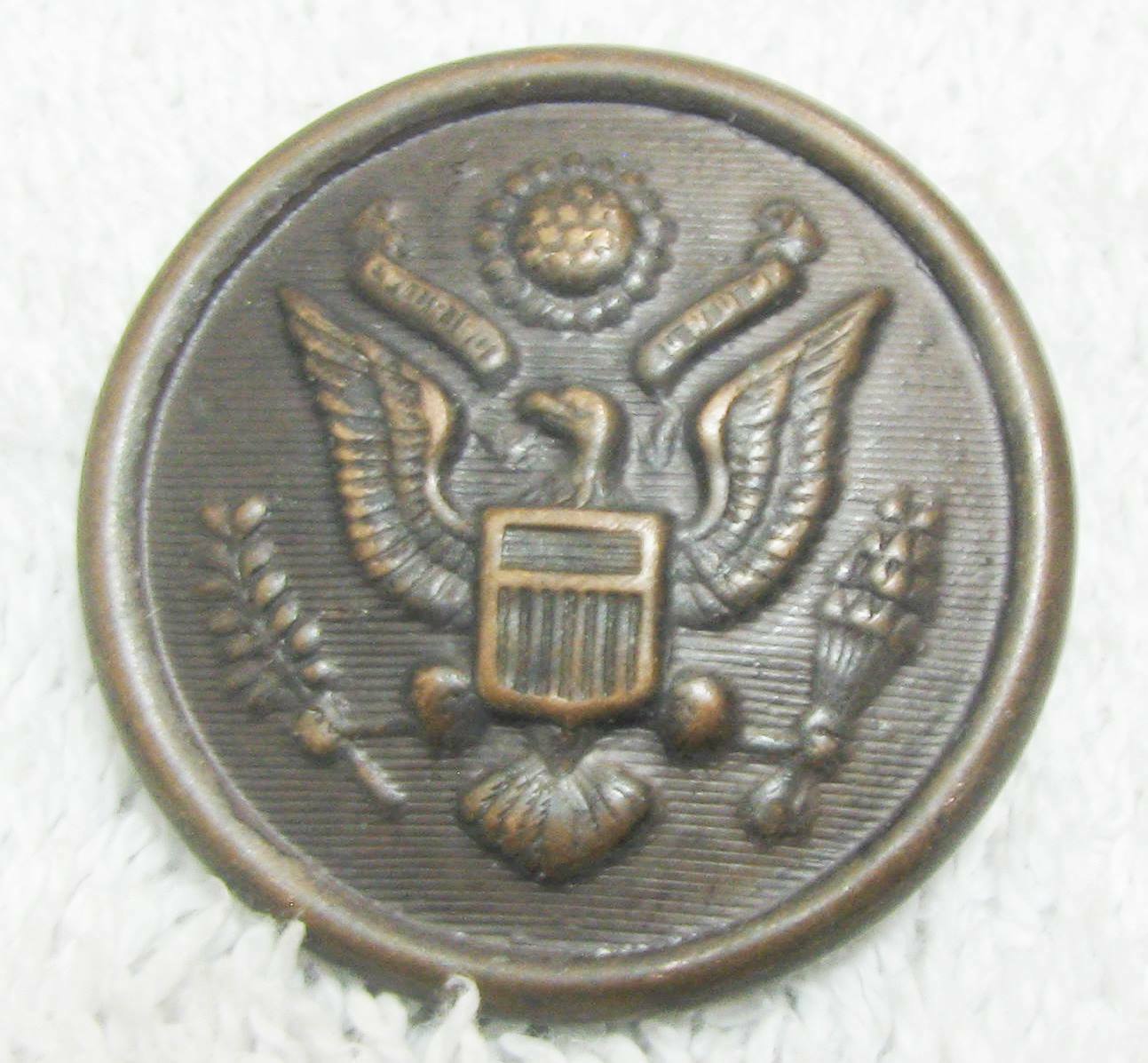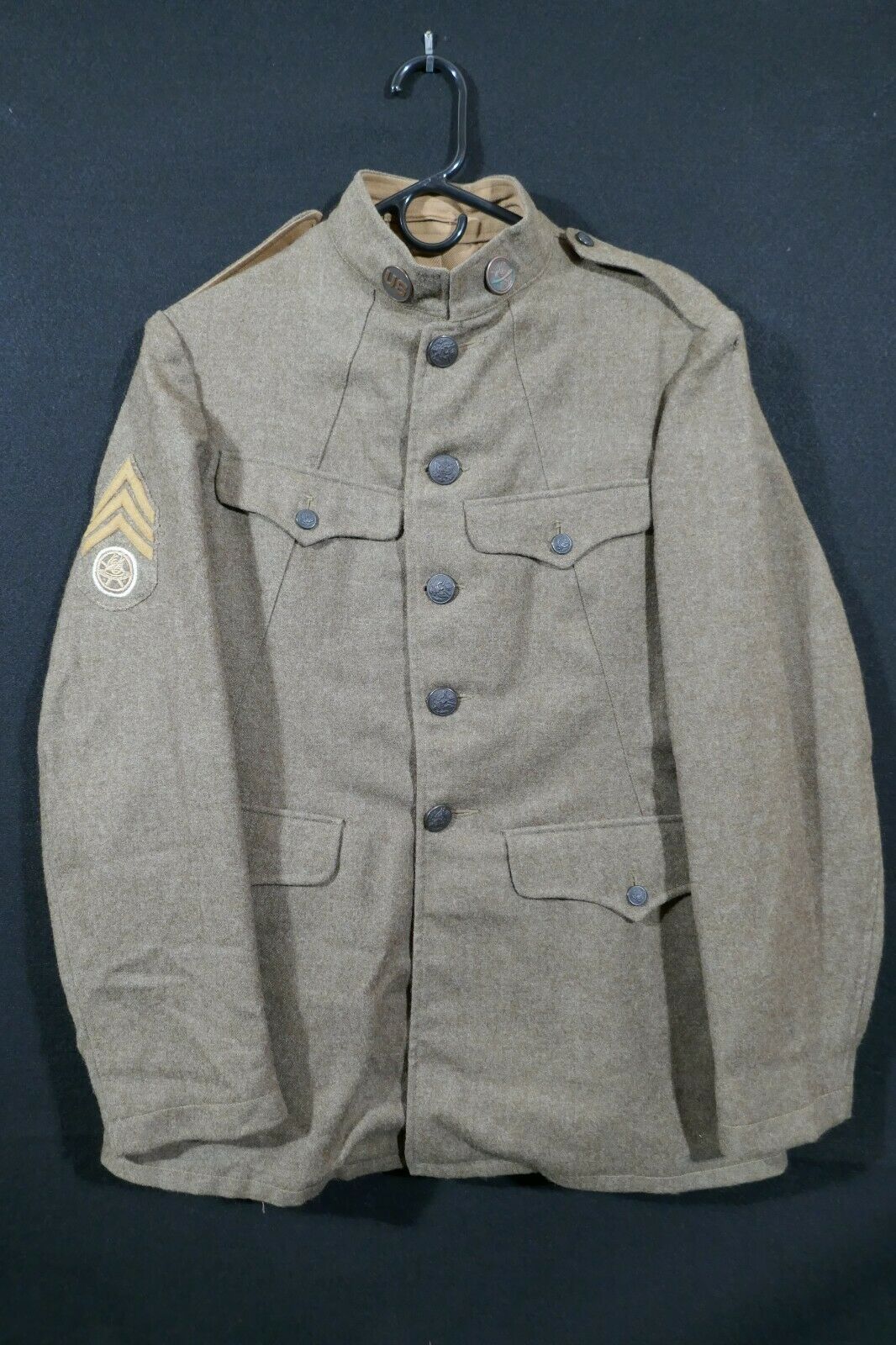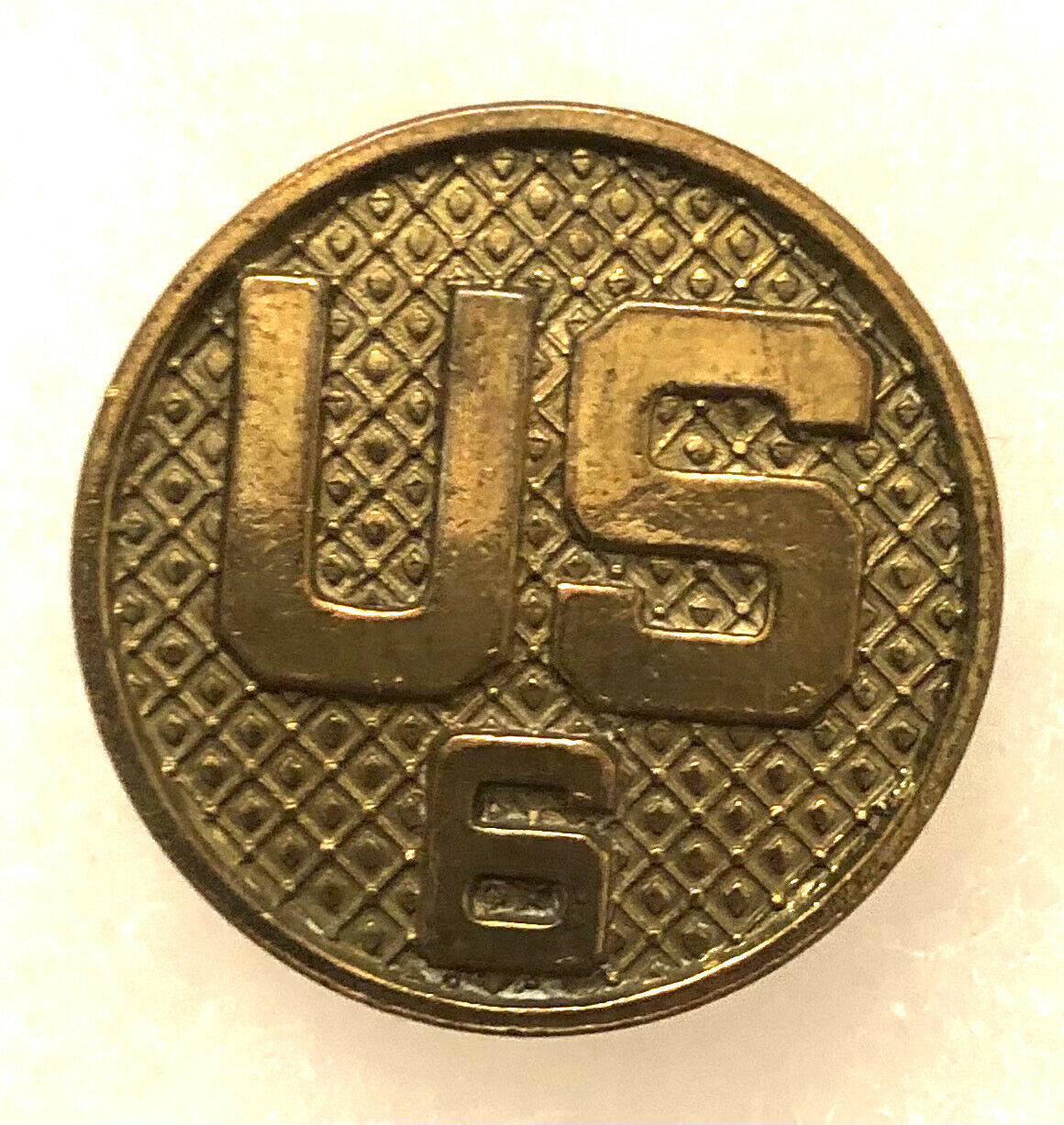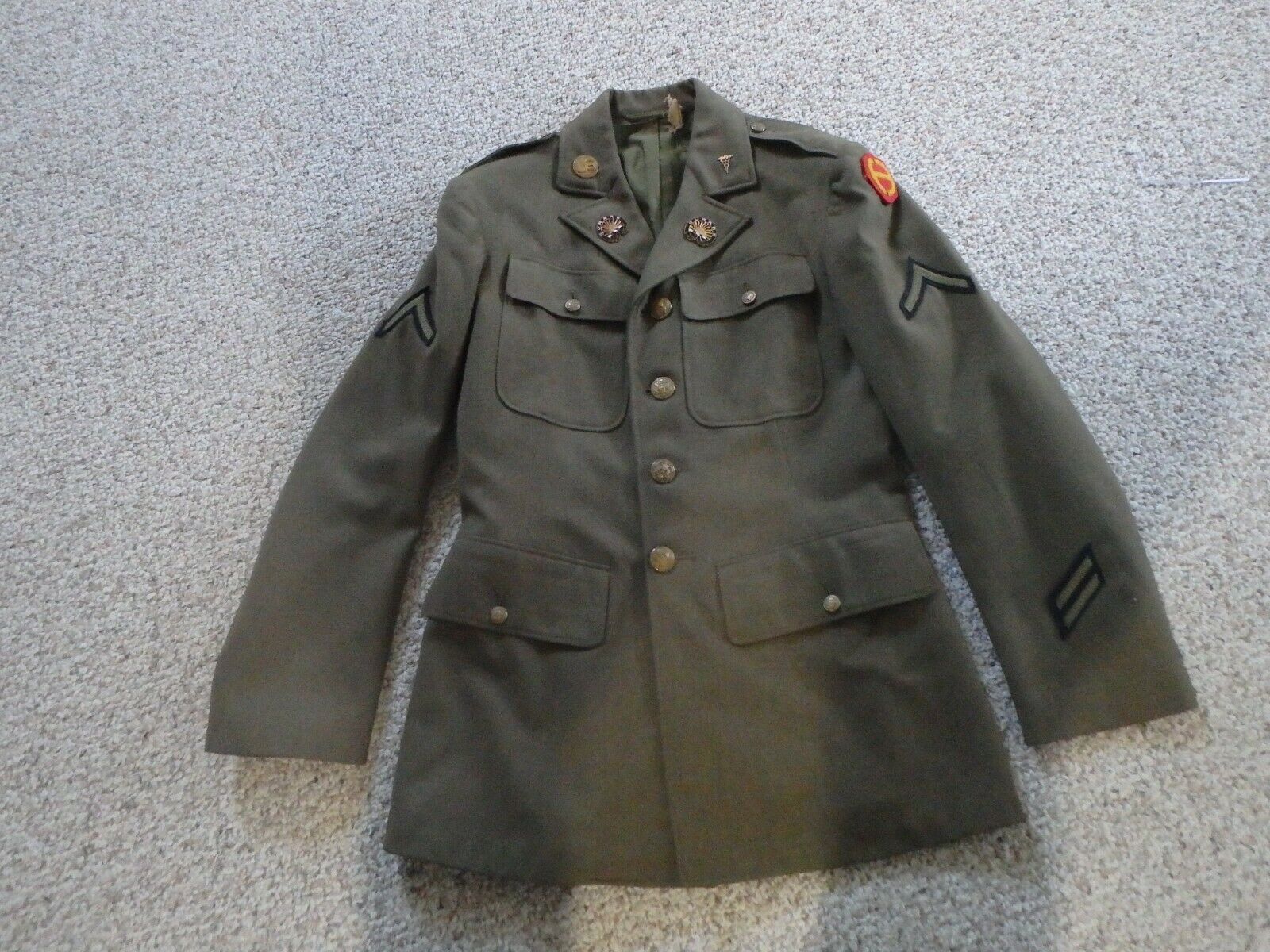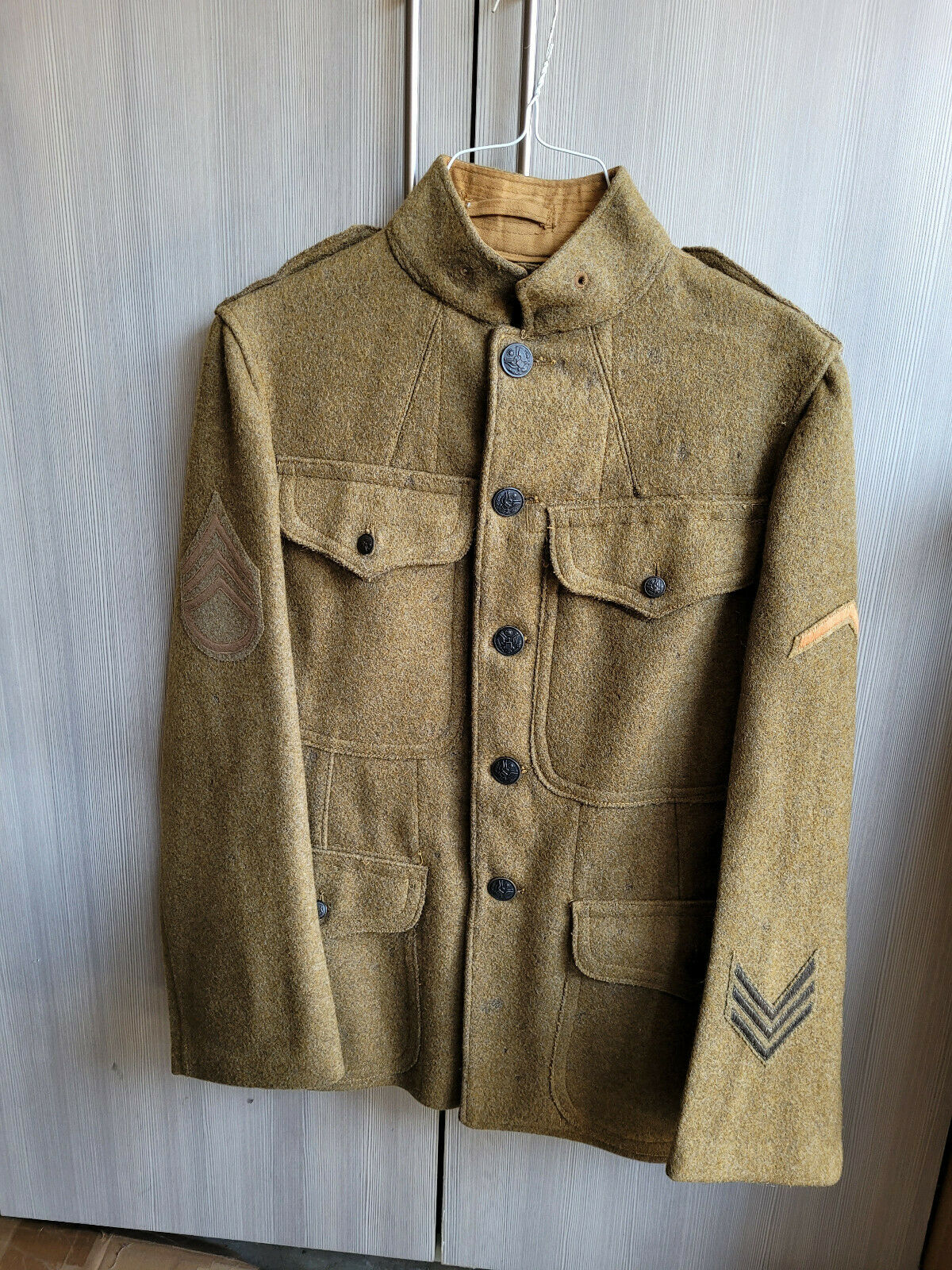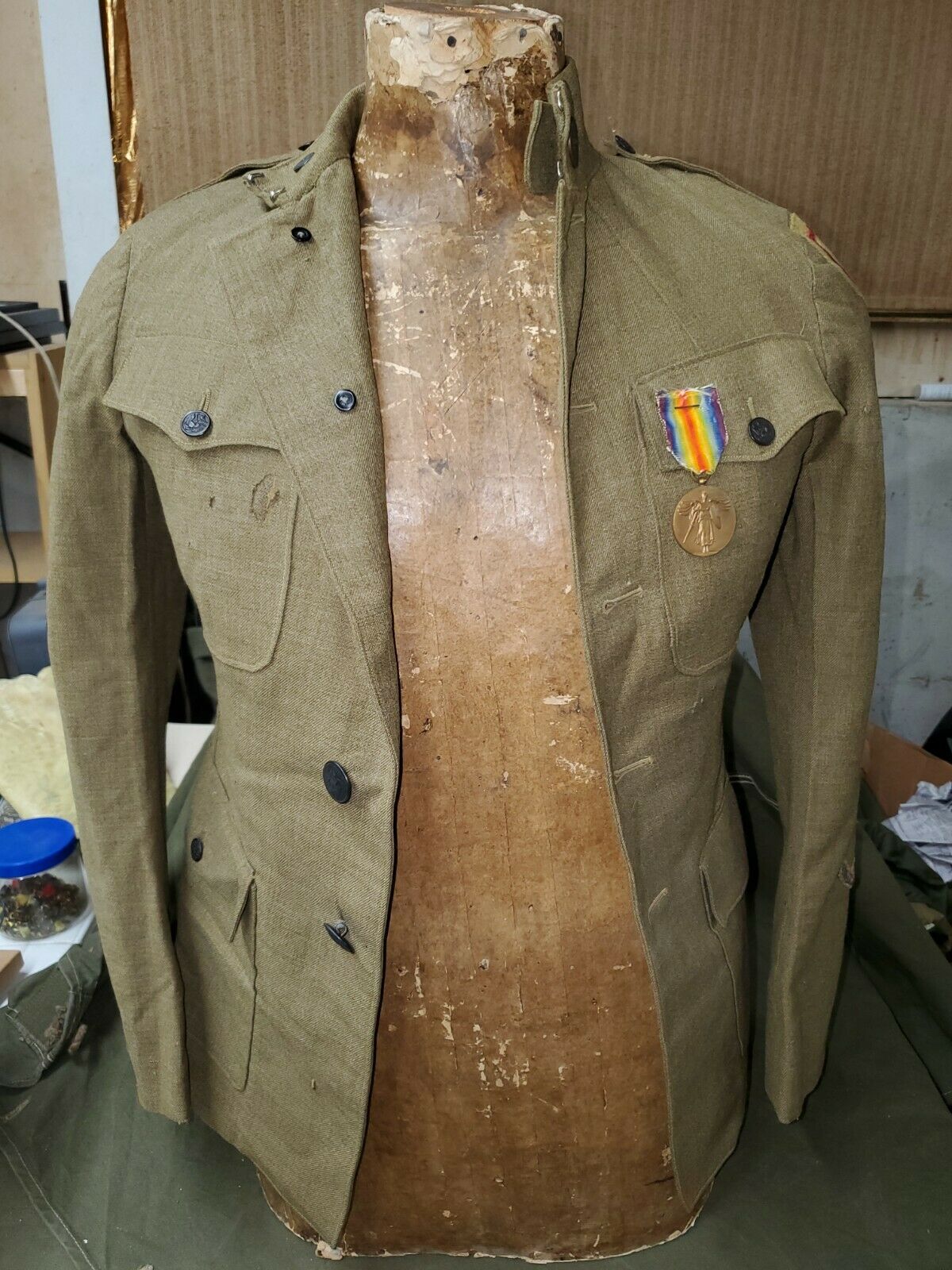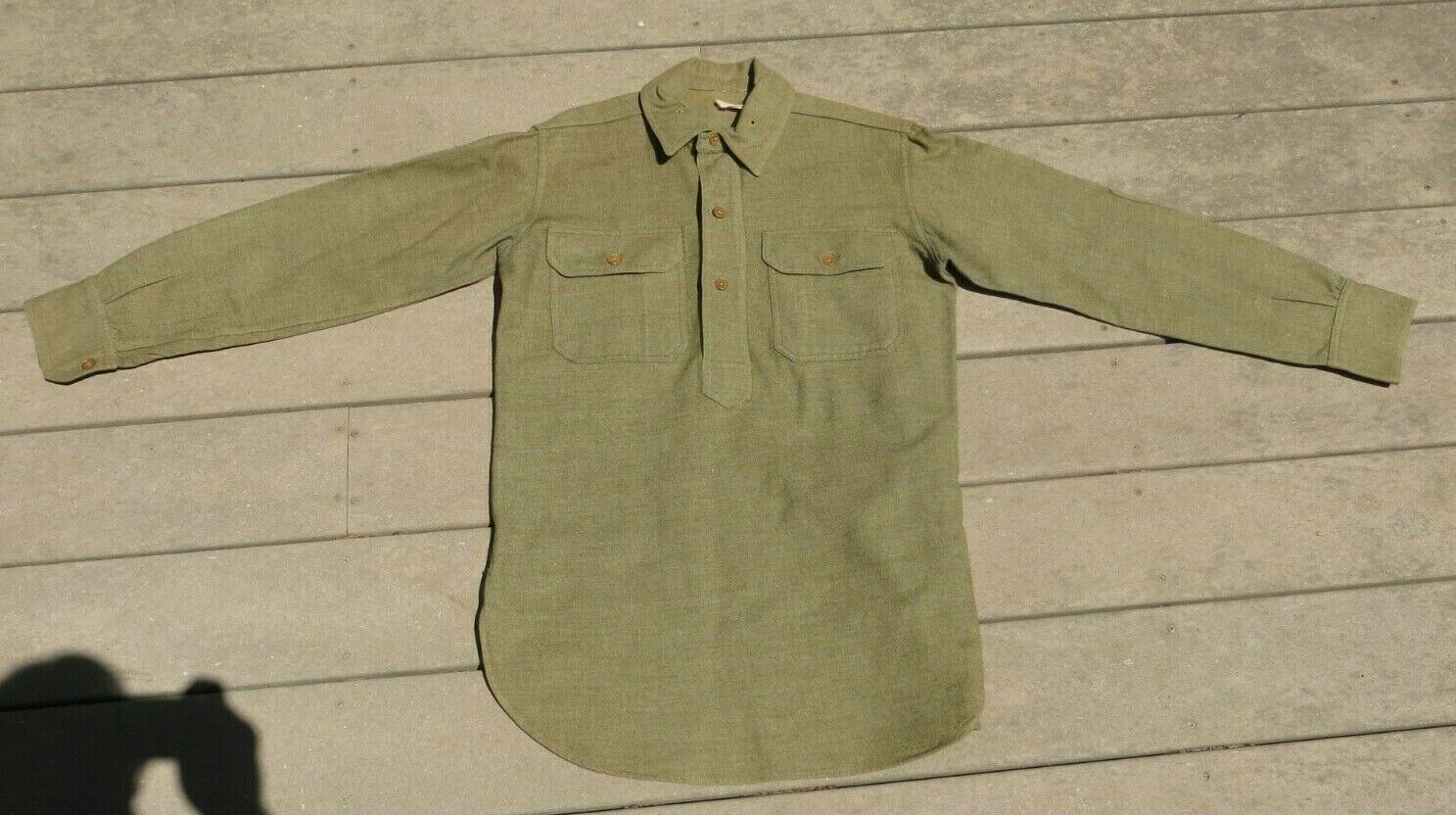-40%
Post WWI USMC M1927 Summer Service Coat; Fourth Marines 2d Marine Bde China 1936
$ 448.8
- Description
- Size Guide
Description
Post WWI USMC M1927 Enlisted Summer Service Coat, Fourth Marines, 2d Marine Division; Shanghai, China.For your consideration is this beautiful Post WW1 UNIFORM. This is a true China Marines piece. This tunic is identified to Corporal Paul M. Duvall. He served with Motor Transport Co., Fourth Marine Regiment, 2d Marine Brigade, Shanghai, China. By 1945 he was promoted to Platoon Sargent of 1st Bn, 2d Mar, 2d Mar DIV, FMF, In Field.
He was in China from 1936 through 1940 with this uniform tunic being made obsolete in 1938 being changed to a full kahki uniform.
This is a TRUE “China Marines” uniform.
Grouping Includes:
USMC M1927 Enlisted Summer Service Coat
Left “Droop Wing” EGA
Right “Droopy Wing” EGA
USMC Garrison Belt
“Sharpshooter” Badge
NOTE: SHIRT, TIE, & TROUSERS NOT INCLUDED
****Paul M. Duvall served in China from Aug 1936 at the rank of Private through Feb 1940 at the rank of Corporal. He was later promoted to the rank of Sergeant while serving on the USS Henderson. By the end of WWII in 1945 he was promoted to the rank of Platoon Sergeant.*
This Pattern 1927 United States Marine Corps Enlisted Summer Service Coat was used by Sergeant Duvall in China from 1936 through 1938. ****
“China Marines” Fourth Marine Regiment
Disorder and civil war that had long been troubling China flared in the mid 1920s with the foreign community in Shanghai, where fighting between opposing Chinese forces became active, demanding a more permanent protective force. The United States had landed Marines twice in 1925, but in 1927 nationalist forces were on the verge of taking the city and the United States responded with a small force of about 340 Marines sent from Guam followed by the 4th Marine Regiment less the 2d Battalion sailing from San Diego on 3 February 1927 embarked in USS Chaumont. The embarked 3d Battalion, commanded by then Major Alexander Vandegrift, was held aboard the transport at State Department direction until a declaration of emergency by the Municipal Council of the international Settlement was declared on 21 March. Once landed the Marines, shortly came under the command of Brigadier General Smedley Butler as Marine Corps Expeditionary Force, United States Asiatic Fleet. They joined forces of seven other nations in the internal defense of the settlement, with orders to not come into conflict with Chinese troops. They were not deployed to the perimeter barricades though they did support international forces that were so deployed. By June additional forces, including 2d Battalion, 4th Marine Regiment as part of a newly activated Provisional Regiment, had arrived in China and been sent to Tientsin. By the time that force arrived the threat to the international settlement in Shanghai had eased and the combined forces of the American, British, Dutch, French, Italian, Japanese, Portuguese, and Spanish were seen as sufficient.
The 4th Marine Regiment was reduced in strength in October 1927 with the 2d Battalion at Tientsin becoming 2d Battalion, 12th Marines and the Provisional Regiment dissolved. The 4th regiment settled into routine garrison duty during which it gained the nickname "China Marines" and a unique feature, the only fife and drum corps in the Corps. The formation of the Fessenden Fifes was a result of influence of the American chairman of the Shanghai Municipal Council and Civil Commandant of the Shanghai Volunteer Corps, Stirling Fessenden, and instruments from the 1st Battalion, Green Howards whose fifers and drummers taught the Marines to play. Reductions continued and on 14 January 1928 the 4th Regiment was detached from the withdrawing Marines of the brigade and on 13 February 1930 the regiment gained its designation as 4th Marines.
The quiet was ended in January 1932 when Japanese forces in Manchuria began seizing Chinese territory in late 1931 and bloody clashes between Chinese and Japanese civilians erupted in Shanghai that month. The 4th Marines were deployed to prevent fighting from spilling into the International Zone. By 4 February Marines had been reinforced by Marines from the Philippines, the Marine detachment of the USS Houston and the United States Army 31st Infantry Regiment. On 3 March 1932 an agreement was reached between combatants, the state of emergency in the International Zone was ended 13 June 1932 and the 4th Marines returned to garrison duty while the 31st Infantry returned to the Philippines. The Commander in Chief, Asiatic Fleet, recommended the 4th Marines be brought up to full strength and a new 2d Battalion was activated 18 September 1932 bringing the unit for the first time in five years to a full three battalion strength until deactivation of the 3d Battalion 19 December 1934. Garrison duty was interrupted during the few tranquil following years only by duty aboard vessels of the Yangtze Rapid Steamship Company November 1933 – July 1935 protecting the ships from pirates on voyages into the interior.
The commanding officer of 4th Marines, then Colonel John C. Beaumont, was one of only two people in China, the other being the naval attaché in Beijing, Commander Thomas M. Shock, to know the actual mission William A. Worton was undertaking for the Office of Naval Intelligence in attempting to penetrate Japan with agents from China. Worton, who had served as a Marine in China 1922—1926, 1927–1929, and 1931–1935 and been commended for his intelligence work by General Butler during Butler's 1927–1929 command of the 4th, arrived during the summer of 1935 to recruit and run agents until his turn over and return to the United States in June 1936.
The peaceful years ended 7 July 1937 when Japanese incursions resulted in an incident at the Marco Polo Bridge used by Japan to send more troops into China. After Japanese military personnel were killed in Shanghai Japanese warships were sent to the city with landing of troops and movement of Chinese troops into the city. The 4th Marines were deployed with orders to prevent either side from entering the American sector "by means other than rifle fire." Again the 4th Marines were reinforced, this time by the 2d Marine Brigade under Brigadier General John C. Beaumont, the units former commanding officer, to which the 4th Marines were attached.
Fighting around the city ended with Japanese forces in full control and the 2d Marine Brigade less the 4th Marines was withdrawn 17 February 1938 leaving these "China Marines" alone to deal with Japanese interests now trying to undermine the Western powers in the International Zone. Their position was compromised by the fact other Western foreign powers had also reduced their forces and by war in Europe in 1939 in which Italy was aligned with the Axis with Japan and Germany, France by June was defeated and ordered by the Vichy Government to cooperate with Japan and the British withdrew due to war needs elsewhere—leaving the 4th Marines alone to oppose Japanese ambitions. The unit had been further reduced by separations from the service with replacements diverted at the direction of the 4th's commander to the 1st Special Defense Battalion in the Philippines so that it consisted of only two battalions, each with only two rifle companies of two platoons each and one machine gun company.
The United States began considering complete withdrawal and Commander in Chief, Asiatic Fleet, Admiral Thomas C. Hart began withdrawal of units along the coast and recommended withdrawal of the 4th Marines as he felt war was inevitable. On 10 November 1941 permission to withdraw the 4th Marines was given and put into effect. 1st Battalion and part of the Headquarters sailed for the Philippines on 27 November embarked in the chartered liner President Madison with the remainder of the 4th Marines embarking in President Harrison and sailing for the Philippines on 28 November 1941 with the first elements arriving at Subic Bay 30 November and the remainder the next day.
Sometimes associated with 4th Marines is the paleontological and anthropological mystery of loss of the Peking Man fossils. The Chinese authorities requested the United States ambassador's help in evacuating the fossils and the custodians records indicate the fossils were crated and taken to the United States Legation in Peking. There a detachment of Marines, sometimes associated with the 4th but actually the Legation Guard Marines from Peking and Tientsin (North China Marines), were to escort the crates to the Marine compound at Tienstin and evacuated aboard President Harrison which was to evacuate remaining military and civilians. The Japanese attack on Pearl Harbor came between the arrival of the crates at the Legation and the rest of the plan's execution. President Harrison had completed the first evacuation of 4th Marines and was headed back leaving Manila on 4 December for Chingwangtao (Qinhuangdao) to evacuate about 300 Legation Guard Marines from Peking and Tientsin but the ship was shadowed by Japanese forces and eventually ordered to stop. To prevent capture of President Harrison, now outfitted to carry troops, Master Orel A. Pierson decided to run aground in hopes of destroying the ship but the ship was salvaged, the crew taken prisoner and the ship refitted by the Japanese to eventually become Kachidoki Maru that was sunk with British prisoners of war by USS Pampanito on 12 September 1944. The Legation Marines were taken prisoner and the crates with the fossils disappeared into the chaos of the war. The question of what happened to the crates of fossils is one of the frequent and unanswerable questions posed to the Marine Corps historians.










